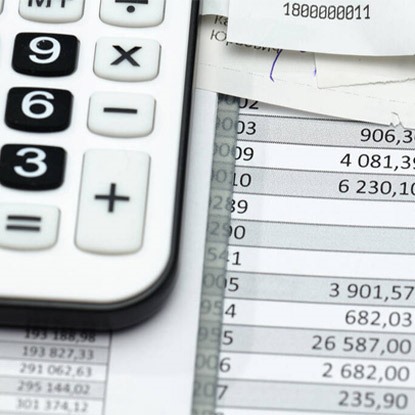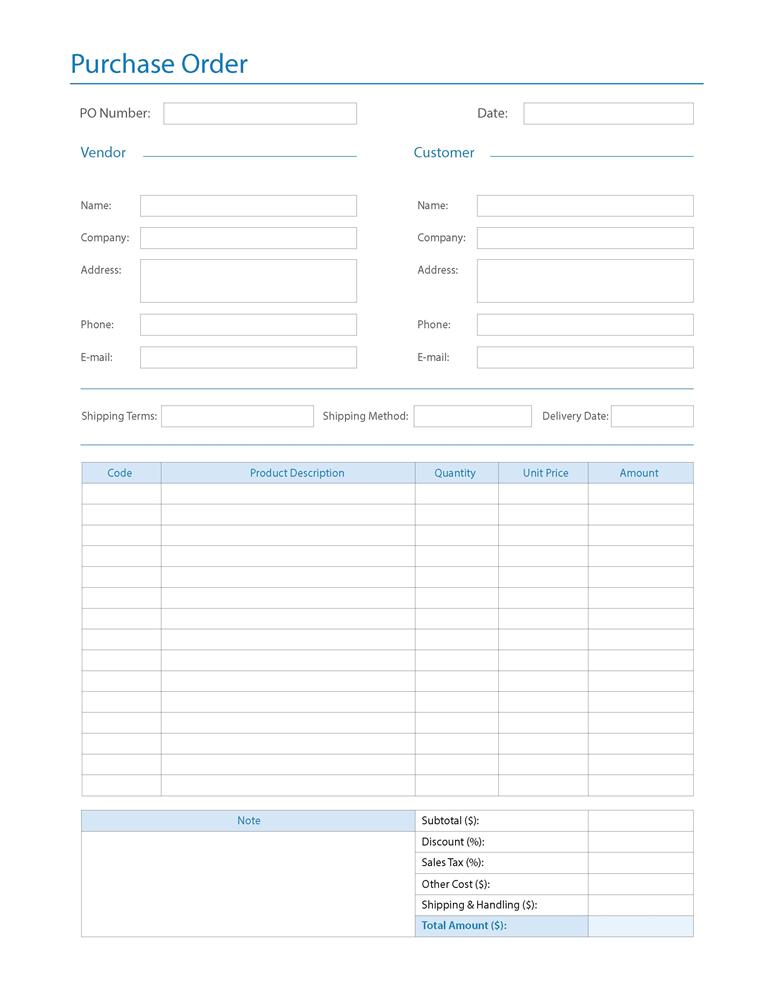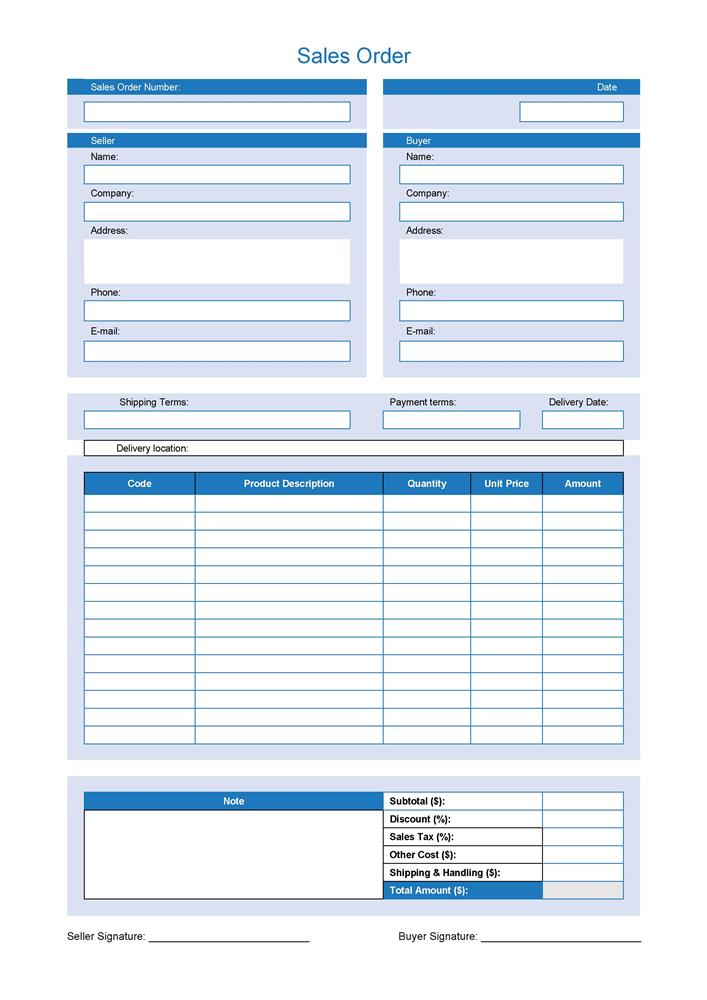Sales Order vs. Purchase Order:
10 Differences
Mastering the effective utilization of purchase orders and sales orders: unraveling the distinctions.


For someone new to the business world, the terms purchase order and sales order might seem a bit confusing. Both terms sound like they have something to do with transactions or sales, but they are actually two different things.
In this blog post, we will discuss the differences between purchase orders and sales orders and why it is important to understand them.

Our platform makes it easy to process orders quickly and accurately, so you can focus on growing your business. Try OrderAction today and see the difference automation can make!
Purchase orders and sales orders both play important roles in the procurement process. Here’s a closer look at each:
A purchase order (PO) is a legally binding document that a buyer sends to a supplier to request goods or services. The main role of a purchase order in the procurement process is to:
The purchase order also provides the basis for the supplier’s invoice, which is generated once the goods or services have been delivered or completed.
A sales order is a document that a seller sends to a buyer to confirm the sale of goods or services. The main role of a sales order in the procurement process is to:
In summary, purchase and sales orders are critical documents in the procurement process. They establish formal agreements between buyers and sellers and help to prevent misunderstandings and disputes.
By providing a clear and detailed outline of the transaction, these documents also help to optimize supply chain management, streamline order fulfillment, and improve business efficiency.

A Purchase Order (PO) is a document signed by a buyer that confirms a seller’s request for goods or services. It outlines the quantity, price, and terms of the agreed-upon transaction.
Purchase orders are commonly used in business to ensure both the buyer and seller are on the same page before any exchange occurs. POs also help buyers keep track of their orders and plan their inventory management more effectively.
A purchase order (PO) is a document that outlines the details of a purchase transaction between a buyer and a supplier. It typically includes the following information:
An example of a purchase order might look something like this:

Purchase Order #12345
Date: April 21, 2023
Buyer: Ace Corporation
123 Main Street
Anytown, USA
Supplier: XYZ Company
456 Oak Street
Othertown, USA
Product: Widget A
Quantity: 100 units
Unit price: $10.00
Delivery date: May 15, 2023
Payment terms: Net 30
Total amount due: $1,000.00
Shipping terms: FedEx Ground, FOB Destination
Delivery location: Ace Corporation, 123 Main Street, Anytown, USA
Buyer Signature: ___________________________
Supplier Signature: ___________________________
Streamline your order management - OrderAction automation platform simplifies the process of order processing and tracking, so you can reduce errors and save time.
With Artsyl, you can easily manage your orders and get back to doing what you do best -
running your business.
Book a demo now
A Sales Order is another document that confirms a request for goods or services, but this time from the seller’s side. It outlines the product or service details, the quantity to be delivered, the price, and the agreed-upon terms of the transaction. Unlike POs, the seller only uses sales orders to confirm orders and track inventory.
A sales order is a document that outlines the details of a sales transaction between a seller and a buyer. It typically includes the following information:

Sales Order #98765
Date: April 21, 2023
Seller: XYZ Company
456 Oak Street
Othertown, USA
Buyer: Ace Corporation
123 Main Street
Anytown, USA
Product: Widget A
Quantity: 100 units
Unit price: $15.00
Delivery date: May 15, 2023
Payment terms: Net 30
Total amount due: $1,500.00
Shipping terms: FedEx Ground, FOB Destination
Delivery location: Ace Corporation, 123 Main Street, Anytown, USA
Seller Signature: ___________________________
Buyer Signature: ___________________________
As you can see, the difference is barely noticeable. No wonder so many people need clarification!
Automating your order processing can help you save time, reduce errors, and improve accuracy. Using OrderAction, you can streamline your processes, manage your inventory more effectively, and improve your overall business efficiency.
Book a demo now
The most important difference between a purchase order and a sales order is the perspective from which each document is written.
A purchase order is a document that a buyer sends to a supplier to request goods or services. It outlines the quantity, price, and delivery details for the items the buyer wishes to purchase. The supplier creates an invoice based on the purchase order.
On the other hand, a sales order is a document that a seller sends to a buyer to confirm the sale of goods or services. It outlines the quantity, price, and delivery details for the items the seller will provide. The buyer creates a purchase order based on the sales order.
In other words, the buyer creates the purchase order while the seller creates the sales order. The purchase order initiates the transaction, while the sales order confirms the transaction.
Another critical difference between the two is that Purchase Orders focus on cost management, while Sales Orders are used to manage revenue.
POs help buyers manage their procurement processes effectively to get the best price available, while Sales Orders help sellers manage their inventory delivery.
A clear understanding of Purchase Orders and Sales Orders is critical, especially if you’re involved in a business transaction. Understanding the nuances can help clear up confusion, improve business relationships, and streamline transaction processes.
Using the wrong type of document can lead to costly mistakes, such as incorrect pricing, delayed deliveries, and misunderstandings.
Purchase Orders (POs) and Sales Orders (SOs) are two different but interrelated documents commonly used in the business-to-business transactional landscape. Understanding when to use each is crucial for effective business operations.

To summarize, POs are generally used when a business is the buyer and wants to specify the terms and details of what is being purchased. Sales Orders are used when the business is the seller and wants to track customer purchases internally for fulfillment and invoicing.
The proper use of PO and sales order documents enhances operational efficiency, financial tracking, and legal compliance.
Purchase Orders and Sales Orders are essential documents in the business world that work together to ensure smooth business transactions. Knowing the difference between the two is critical in ensuring accuracy and efficiency in managing procurement processes and sales activities.
As a buyer or a seller, understanding the nuances of both documents can help alleviate confusion and ensure that your transactions are carried out smoothly.
OrderAction solution offers a range of features to help you manage your orders more effectively, from automated data extraction to real-time tracking and reporting. With OrderActiobn, you can ensure that your orders are fulfilled quickly and accurately to keep your customers and suppliers happy.
Book a demo now
A purchase order (PO) is a document a buyer sends to a supplier requesting goods or services. It outlines the quantity, price, and delivery details for the items the buyer wishes to purchase. The supplier creates an invoice based on the purchase order.
A sales order is a document sent by a seller to a buyer confirming the sale of goods or services. It outlines the quantity, price, and delivery details for the items the seller will provide. The buyer creates a purchase order based on the sales order.
The buyer creates the purchase order. The seller creates the sales order.
A purchase order typically includes the purchase order number, date, buyer information, supplier information, product description, delivery date, payment terms, shipping terms, and signatures of both the buyer and supplier.
A sales order typically includes the sales order number, date, seller information, buyer information, product description, delivery date, payment terms, shipping terms, and signatures of both the seller and buyer.
The purpose of a purchase order is to request goods or services from a supplier in a formal and documented way. It helps ensure that both parties agree on the quantity, price, and delivery details of the purchased items.
A sales order aims to confirm the sale of goods or services from a seller to a buyer in a formal and documented way. It helps to ensure that both parties agree on the quantity, price, and delivery details of the items being sold.

No, a purchase order cannot be used as an invoice. A purchase order is a request for goods or services, while an invoice is a bill for goods or services that have already been provided.
No, a sales order cannot be used as an invoice. A sales order is a confirmation of the sale of goods or services, while an invoice is a bill for goods or services that have already been provided.
After a purchase order is sent, the supplier will review it and then accept or reject it. If the supplier accepts the order, they will create an invoice and send it to the buyer. The buyer will then pay the supplier based on the payment terms outlined in the purchase order.
After a sales order is sent, the buyer will review it and accept or reject it. If the buyer accepts the order, they will create a purchase order and send it to the seller. The seller will then provide the goods or services based on the delivery details outlined in the sales order.
Yes, purchase orders and sales orders are both legally binding documents. They outline the terms and conditions of the transaction and serve as evidence of the agreement between the buyer and seller.
Yes, changes can be made to a purchase order or sales order after it has been sent, but both parties must agree to the changes and sign off on them.
Take your purchase order management to the next level with OrderAction so you can stay ahead of the competition and grow your business faster than ever before. Try OrderAction by Artsyl today and experience the power of intelligent automation!
Book a demo now